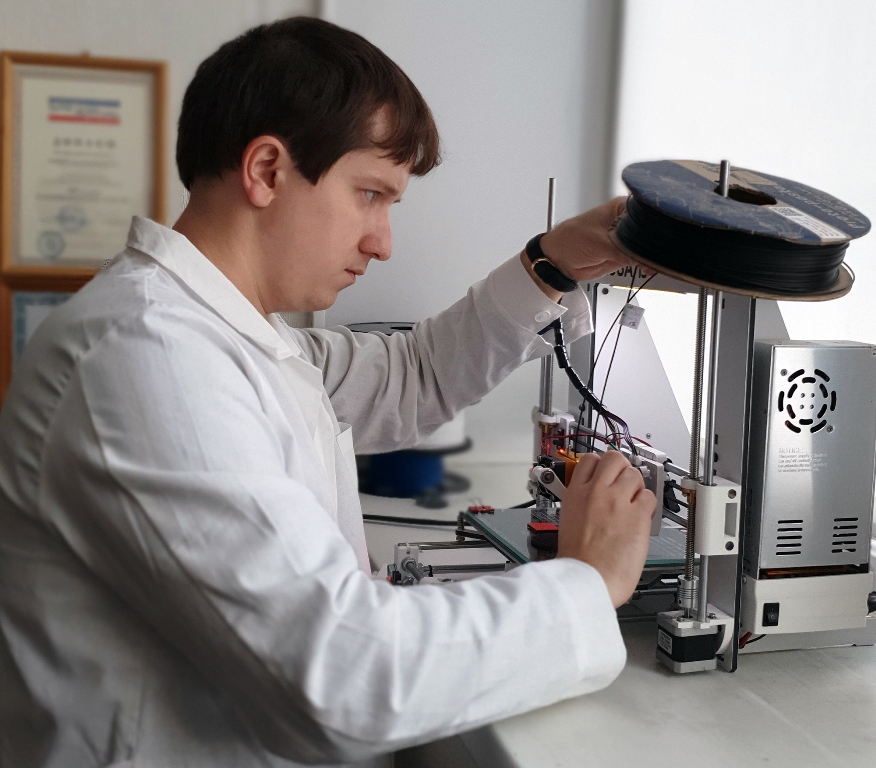TSU radiophysicists are forming a database of properties of composite materials, which can be used to create devices with 5G and space communication devices operating in the terahertz range. The scientists are creating composite materials from ABS plastic and nanotubes and measuring their properties in a frequency range from 10 MHz to 1 THz.
To create the source material, the radiophysicists are using polymers and, aided by chemical treatment, filling them with carbon nanotubes, which the Boreskov Institute of Catalysis of the Siberian Branch of the Russian Academy of Sciences produces for the Terahertz Laboratory of the Faculty of Radiophysics.
- By adding nanotubes of different concentrations, we change the electrophysical properties of the material, for example, we can increase the dielectric constant. Then, using 3D technology, a printed circuit board with elements (conductors, resistors, and others) can be created, - says Alexander Badyin, project manager, associate professor of the Faculty of Radiophysics. - From the material obtained on a 3D printer, we print a control sample - plates or rings, depending on the standard of the measuring installation, and examine the properties of the composite in the terahertz range.
According to the researcher, the interest of scientific groups is mainly concentrated in household radiation up to 4-5 GHz. TSU scientists are working with a wider range - up to 1 THz, which is currently insufficiently studied. At the moment, they have studied the properties of 50 samples.

- We produce materials that are currently in demand in the creation of mobile devices, medicine, and the study of works of art, - said Alexander Badyin. - It is here that the positive properties of the terahertz range are noted. Not everyone knows that the terahertz range provides the transition to the 5G standard and is promising for communication in space. But today there are no technical means due to a lack of materials that cannot be manufactured without the use of 3D technology.
In the Terahertz Laboratory of the Faculty of Radiophysics, there are tools and techniques for manufacturing composite filaments based on original materials developed by the university staff. The scientists made passive elements of the terahertz range (absorbers and polarizers), which were tested experimentally on the equipment of the TSU Measurement Center and were tested at international conferences in Nagoya (Japan), Paris (France), and Moscow and Tambov (Russia).